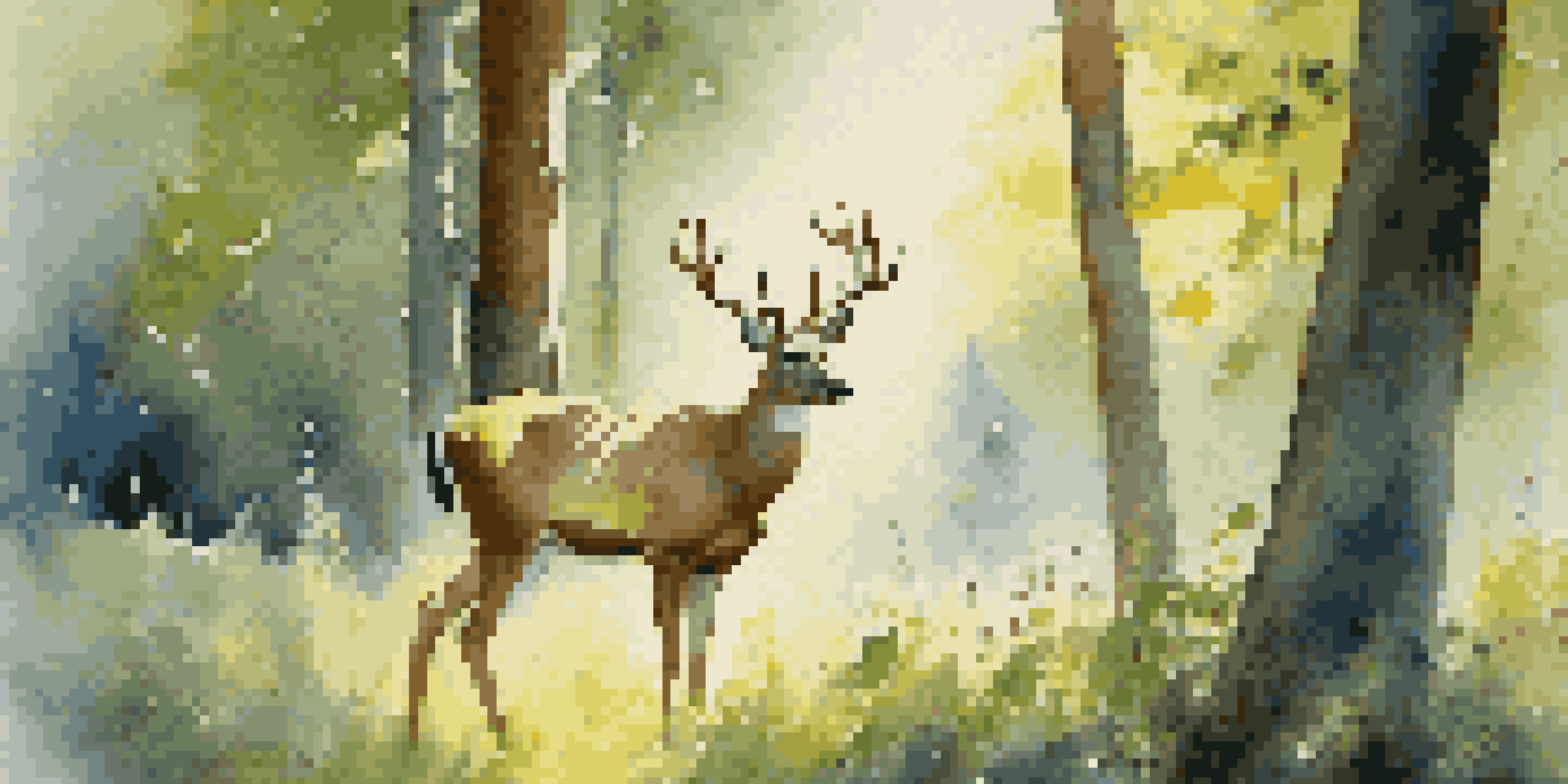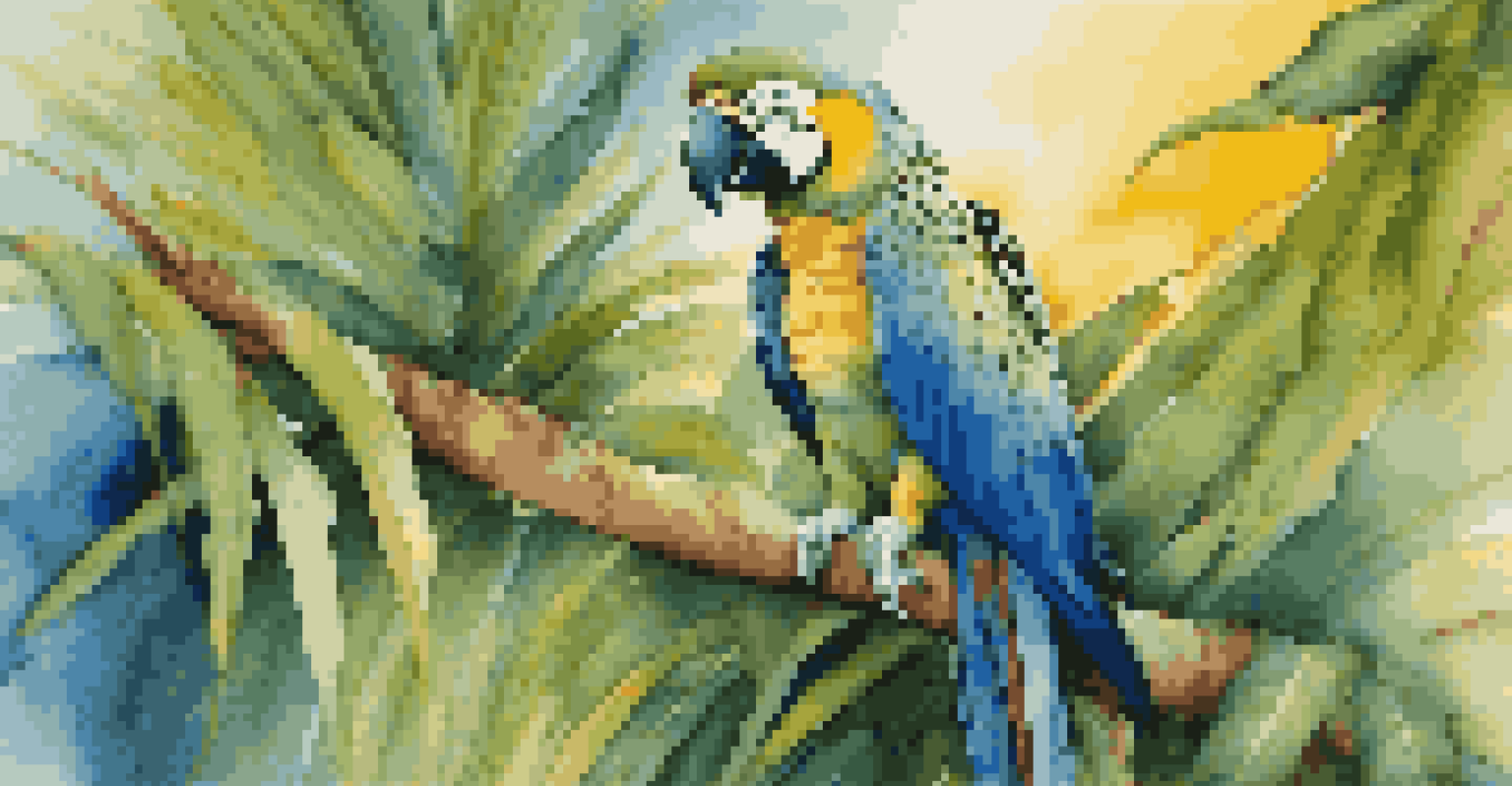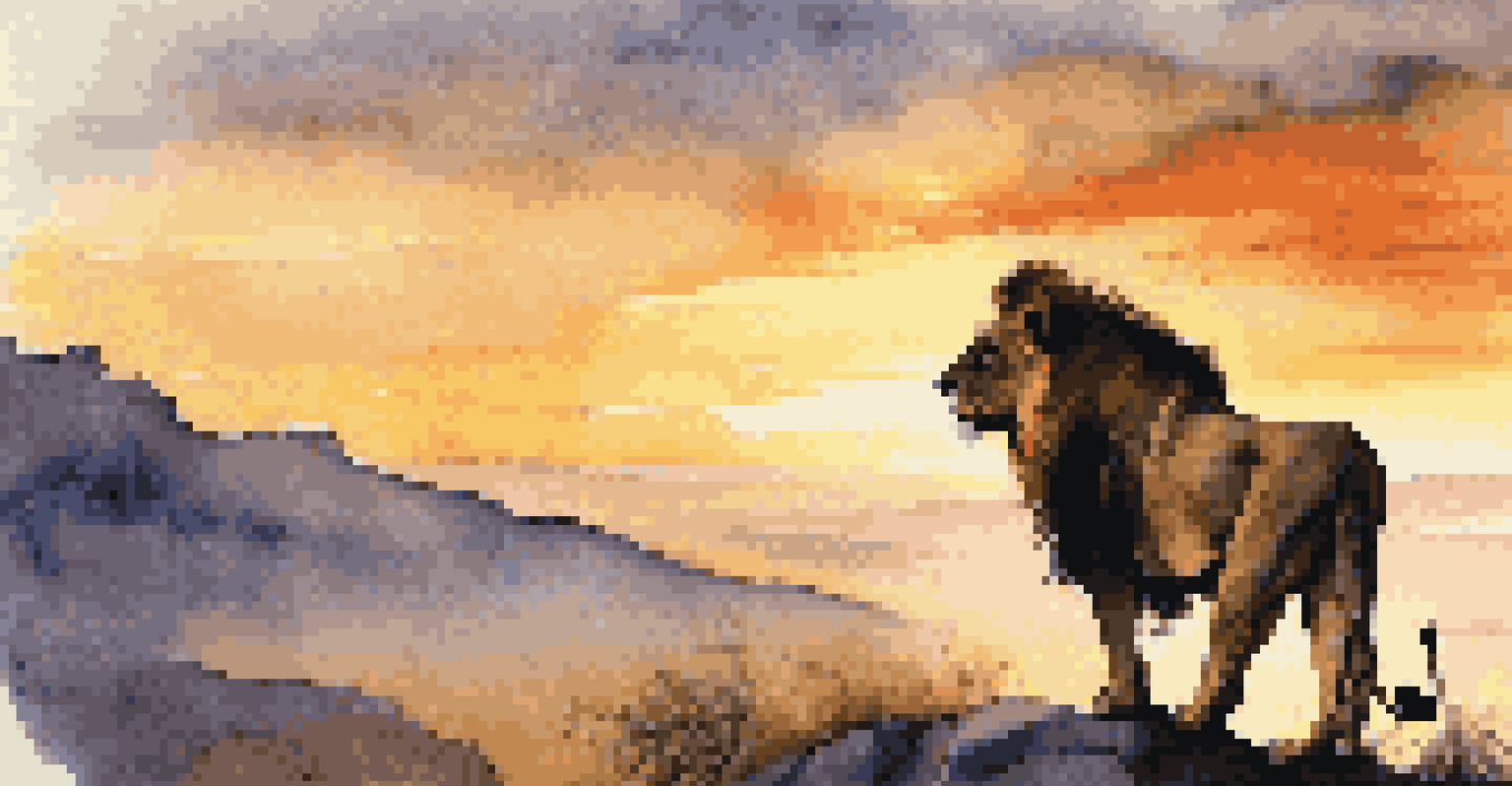Capturing Wildlife: Tips for Stunning Animal Photography

Choose the Right Equipment for Wildlife Photography
Selecting the right camera and lens is crucial for wildlife photography. A DSLR or mirrorless camera paired with a telephoto lens allows you to get close-up shots without disturbing the animals. For instance, a 300mm or 400mm lens can help you capture details like the texture of a bird's feathers from a distance.
In every walk with nature one receives far more than he seeks.
Don’t forget about accessories like tripods and stabilizers. These tools can help reduce shake and ensure sharp images, especially when shooting in low light or at slow shutter speeds. Imagine trying to hold your breath while taking a photo; that’s how steady you want to be!
Lastly, consider using a camera with fast autofocus capabilities. Wildlife can be unpredictable, and having gear that can quickly lock onto a subject can make all the difference in capturing that perfect shot.
Understand Animal Behavior for Better Shots
To capture stunning wildlife images, understanding animal behavior is key. Spend time observing animals in their natural habitat to learn their routines and habits. For example, knowing when a deer is most active can help you position yourself for the best photographs.

Patience is a virtue in wildlife photography. Animals may not always perform on cue, and waiting for the right moment can lead to incredible shots. Think of it like fishing; sometimes, you just need to wait for the right catch!
Choose the Right Photography Gear
A DSLR or mirrorless camera with a telephoto lens, along with accessories like tripods, is essential for capturing wildlife effectively.
Additionally, try to remain as unobtrusive as possible. Using camouflage clothing or hiding behind natural elements can help you get closer without startling the animals, which often leads to more authentic and dynamic photographs.
Master Lighting Techniques for Dramatic Effects
Lighting can make or break your wildlife photographs. The golden hours—just after sunrise and just before sunset—provide a soft, warm light that can transform an ordinary shot into something magical. Imagine the way the sun casts a glow on a lion's mane; it adds drama and depth.
The camera is an instrument that teaches people how to see without a camera.
Overcast days can also be advantageous, as the diffused light minimizes harsh shadows and highlights. This is particularly beneficial for capturing the details in fur or feathers without losing texture. Think of it as nature’s softbox!
Experimenting with backlighting can create stunning silhouettes. Position yourself so that the sun is behind your subject; this technique can emphasize shapes and outlines, giving a unique perspective to your wildlife photography.
Framing and Composition Techniques for Wild Animals
Effective framing can elevate your wildlife photos from ordinary to extraordinary. Use the rule of thirds to position your subject off-center, drawing the viewer's eyes naturally into the scene. For instance, placing a bird on one side of the frame can create a more dynamic image.
Incorporating leading lines can also enhance your composition. These lines can be anything from a winding river to a path through the grass that guides the viewer’s eye toward the subject. Think of it as creating a visual pathway!
Understand Animal Behavior
Observing wildlife and knowing their routines helps photographers anticipate the best moments for stunning shots.
Don’t hesitate to include some of the animal’s habitat in your shots. This context adds storytelling elements to your photographs, helping the viewer understand the environment in which the animal lives.
Use Patience and Persistence for Wildlife Photography
Wildlife photography often requires a great deal of patience and persistence. You may spend hours, or even days, waiting for that perfect moment when an animal appears. It’s important to enjoy the process, much like a treasure hunt; sometimes the journey is just as rewarding as the destination.
Be prepared for unexpected challenges, whether it’s changing weather or elusive animals. Staying flexible and adapting your plans can lead to surprising opportunities. If you’re out in the field and see a beautiful scene, don’t hesitate to capture it, even if it’s not what you initially set out to shoot.
Celebrate the small victories, too! Even if you don’t get the shot you envisioned, capturing candid moments or interactions can be equally rewarding. Each experience in the field builds your skills and enhances your appreciation for wildlife.
Editing Tips to Enhance Your Wildlife Photos
Editing is an essential part of wildlife photography that can significantly enhance your images. Basic adjustments like cropping, exposure, and contrast can make your photos pop. Think of it as putting the finishing touches on a painting; it can transform your work.
Consider using software like Adobe Lightroom or Photoshop for more advanced editing. You can fine-tune colors, remove distractions, or even sharpen details, giving your photos a professional touch. Remember, though, to maintain the authenticity of the scene.
Respect Nature While Shooting
Maintaining a safe distance from animals and following wildlife regulations ensures both their safety and the integrity of your photography.
Don’t overdo it! While editing can enhance your images, it’s important to keep the essence of the wildlife experience intact. Aim for a balance between enhancement and authenticity, allowing your viewers to connect with the natural beauty of the moment.
Respect Nature and Wildlife While Photographing
One of the most crucial aspects of wildlife photography is respecting nature and the animals you’re photographing. Always maintain a safe distance to avoid disturbing their natural behavior. Imagine how alarming it would be to have a stranger suddenly invade your personal space!
Educate yourself about local wildlife laws and regulations, especially in protected areas. Following these guidelines protects the animals and keeps you safe while ensuring that future generations can enjoy the same experiences.

Lastly, leave no trace. This means cleaning up after yourself and not disturbing the environment. By being a responsible photographer, you contribute to the preservation of wildlife and their habitats, allowing others to enjoy the beauty you capture.